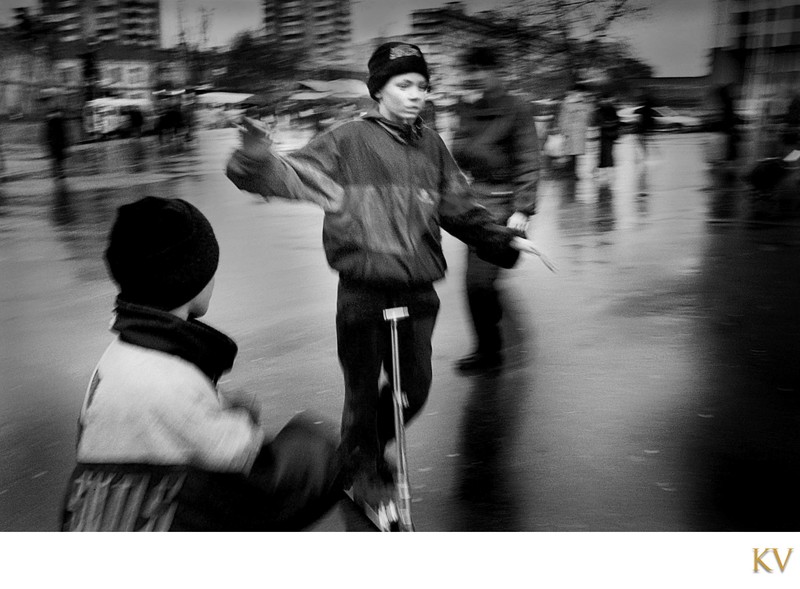1st Place NPPA Best of Photojournalism Magazine Picture Story
Ukraine's Lost Generation
The difficult shift to a free-market economy has led to a rise in homeless children in many former communist countries. In Ukraine in the early 2000s, an alarming number of children were abandoned or forced onto the streets. Official estimates vary widely from 30,000 to 300,000, with some experts suggesting the true figure is even higher. These vulnerable children often endure sexual violence, drug abuse, malnutrition, police abuse, and harassment. They also engage in risky sexual activity, face forced sex and unintended pregnancies, and are susceptible to various infections, including HIV, STDs, and hepatitis.


Suffering from morning sickness, Natasha Dzhuley, 16, wakes up after a night of prostitution. Though pregnant, a nervous Natasha claims that her abortion worked. Fearful of her pimps’ reaction to her pregnancy she drank several bottles of red wine and took a ‘very hot bath in which she bled.’ Natasha, like other girls work out of a mafiacontrolled flat where they are given clean clothes and instructed to bathe regularly.
-
Inhaling glue serves a tragic purpose for most of these children, not only numbing the emotional pain of their sad lives but also suppressing their hunger. They often inhale "in the box," a practice where the rancid fumes are trapped longer, thereby minimizing the amount of glue required and extending the duration of their high.

Denise Selivanov, 13, inhales glue while his younger brother Artyom Selivanov, 9, watches. After suffering years of abuse at the hands of their alcoholic father, Denise made the decision that life on the streets would be far easier than the misery they experienced at home.



A train underpass provides some shelter from the elements as the boys play cards and kill their hunger by huffing glue.


Suffering from a broken nose and bruised ribs Natasha whimpers in pain from the beatings she received from her pimp's men. Ruslana believes her beatings were a warning to other prostitutes to stay in line. Several days later the children watched helplessly as Natasha was dragged away by six men. Her boyfriend has not seen or heard from her since.


For the children depicted in this series, the chances of escaping their dire circumstances are tragically slim. Several, including Sasha and Ruslan, are no longer alive. The relentless toll of glue inhalation not only ravaged their lungs and internal organs but also led to severe mental health issues, overdoses, and ultimately, death. Natasha, seen earlier in this series, had a baby boy and was last known to be living near her original location, supporting her son and new boyfriend through continued prostitution. The fate of many other children remains unknown.
A year after this series was concluded and published internationally, documentary cinematographer Shira Pinson revisited the surviving children, documenting their ongoing struggles in her 2005 film, Flowers Don't Grow Here.
You can view the trailer of this documentary here.
Next Picture Story: The Illegal Coal Miners of Ukraine's Donbas